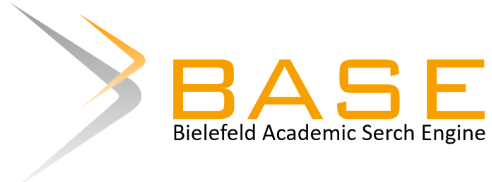Abstract
Students are now used to using audiovisual platforms to learn as they once were forced to adapt to this type of learning due to face-to-face lessons were impossible at that time because of the pandemic. Audiovisual learning resources came out sporadically to accommodate the needs of study at home or anywhere possible. The static audiovisual (enhanced podcast) and dynamic audiovisual (video) are two types of virtual platforms educators continuously harness to support their lesson teachings even though the face-to-face meetings have been allowed gradually. However, there are not many studies conducted to analyze whether one type is more effective in teaching comprehension to students than the other. This paper is looking to find the answer. It questions if enhanced podcast with less complexity in their content pictures can actually become more practical for students to achieve comprehensions on teaching procedural or process topics in geography even it is less attractive than its counterpart, video. The study was conducted to five ESL students in an additional or extra geography class in Jakarta International College. The findings are: students saw enhanced podcasts or static audiovisual media (less complex picture contents) are giving them better learning experience than watching full-motion videos.
References
Abykanova, B., Nugumanova, S., Yelezhanova, S., Kabylkhamit, Z., & Sabirova, Z. (2016). The Use of Interactive Learning Technology in Institutions of Higher Learning. International journal of environmental and science education, 11 (18), 12528-12539. Algarni, A., Birrell, C., & Porter, A. (2012). Evaluating the use of worked examples and problem solving methods in teaching mathematics for ESL students at the tertiary level. Arguel, A., & Jamet, E. (2009). Using video and static pictures to improve learning of procedural contents. Computers in human behavior, 25 (2), 354-359. Brame, C. J. (2016). Effective educational videos: Principles and guidelines for maximizing student learning from video content. CBE—Life Sciences Education, 15(4), es6. Buzzetto-More, N. A. (2014). An examination of undergraduate student’s perceptions and predilections of the use of YouTube in the teaching and learning process. Interdisciplinary Journal of E-Learning and Learning Objects, 10(1), 17-32. Fernandez, V., Simo, P., & Sallan, J. M. (2009). Podcasting: A new technological tool to facilitate good practice in higher education. Computers & education, 53(2), 385-392. Gass, S., Winke, P., Isbell, D. R., & Ahn, J. (2019). How captions help people learn languages: A working-memory, eye-tracking study. Kennedy, M. J., Hart, J. E., & Kellems, R. O. (2011). Using enhanced podcasts to augment limited instructional time in teacher preparation. Teacher Education and Special Education, 34(2), 87-105. Nash, J. (2015, July). Using video podcasts to teach procedural skills to undergraduate students. In Proceedings of the 44tH Conference of the Southern African Computer Lecturers Association SACLA (pp. 77-84). Rahmani, M., & Sadeghi, K. (2011). Effects of note-taking training on reading comprehension and recall. Reading, 11(2), 116-128. Rosenbaum, P. R. (2005). Observational study. Encyclopedia of statistics in behavioral science. Siedlecki, S. L. (2020). Understanding descriptive research designs and methods. Clinical Nurse Specialist, 34(1), 8-12. Stockwell, B. R., Stockwell, M. S., Cennamo, M., & Jiang, E. (2015). Blended learning improves science education. Cell, 162(5), 933-936. Suyatna, A., Anggraini, D., Agustina, D., & Widyastuti, D. (2017, November). The role of visual representation in physics learning: dynamic versus static visualization. In Journal of Physics: Conference Series (Vol. 909, No. 1, p.012048). IOP Publishing. Thapa, M. M., & Richardson, M. L. (2010). Dissemination of radiological information using enhanced podcasts. Academic radiology, 17(3), 387-391. Centric, Medical. (2022, December 26). Importance of forests to our health. YouTube, www.youtube.com/watch?v=Reb4JAB2f5w Geographic, National. (2017, August 28). Causes and effects of climate change |National Geographic.YouTube, www.youtube.com/watchv=G4H1N_yXBiA&t=108s Ecosia. (2020, March 20). The importance of forests | how to protect forests. YouTube, www.youtube.com/watch? v=_dWJVHIE9S8 English, Al Jazeera. (2019, December 1). What is climate change? start here. YouTube, www.youtube.com/watch? v=dcBXmj1nMTQ&t=285s
Recommended Citation
Adelina, Erni and Hutabarat, Peny Meliaty
(2024)
"COMPARING THE EFFECTIVENESS OF STATIC AND DYNAMIC AUDIOVISUAL IN AN ADDITIONAL GEOGRAPHY LESSON IN ONE PATHWAY COLLEGE IN JAKARTA,"
Jurnal Vokasi Indonesia: Vol. 11:
No.
2, Article 1.
DOI: 10.7454/jvi.v11i2.1208
Available at:
https://scholarhub.ui.ac.id/jvi/vol11/iss2/1








